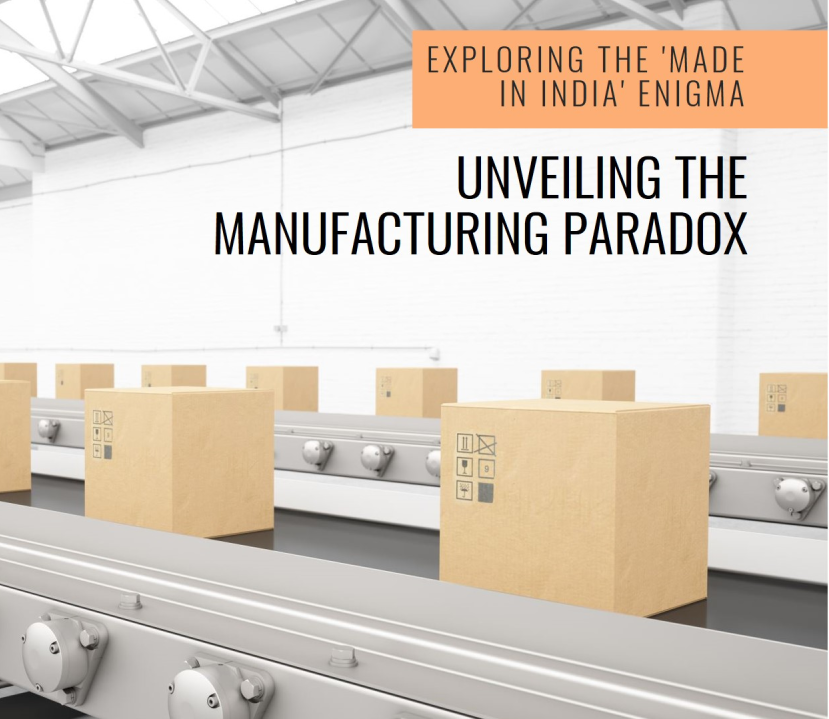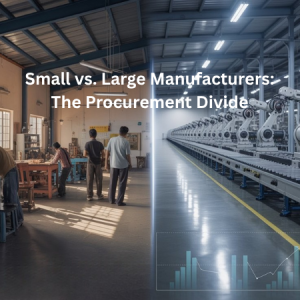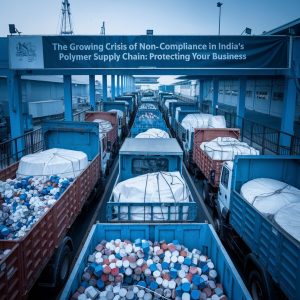

The Great Manufacturing Paradox: Why 'Made in India' Could Mean 'Made By No One'
Published on: February 16, 2025
Author: Team JITSY
Is the future of Indian manufacturing human-free? If you just felt uncomfortable reading that question, good. We need to talk.
The Automation Illusion
In a spotless factory in Pune, robotic arms dance in perfect synchronization. It's a scene straight out of a sci-fi movie – except it's happening right now. The facility operates at 92% automation, and its owner proudly claims they've "solved" the human efficiency problem.
But have they really?
The Numbers That Don't Add Up
Let's challenge some assumptions:
- Automated factories report 35% higher efficiency
- Human error in manufacturing drops by 90%
- Operating costs decrease by 40%
Impressive? Perhaps. Complete? Not even close.
Because here's what these numbers don't tell you:
- Innovation rates drop by 28% in highly automated environments
- Problem-solving flexibility decreases by 45%
- Customer satisfaction scores actually decline in fully automated setups
The Hidden Cost of Perfect Efficiency
"We automated everything we could. Then we realized we had automated away our ability to adapt."
- Rajesh Kumar, CEO of a leading auto components manufacturer
The Real Question
What if we're asking the wrong question? Instead of "How do we remove human inefficiency?" perhaps we should ask, "How do we enhance human capability?"
The Intelligence Paradox
Consider this: While artificial intelligence can process millions of data points per second, it took a veteran shop floor supervisor in Gujarat exactly 3 seconds to prevent a ₹2 crore disaster by noticing a subtle change in machine sound.
This isn't an argument against automation. It's a wake-up call about what we're really optimizing for.
Myth vs. Reality
Myth: Perfect efficiency is the goal, Reality: Perfect adaptability is the goal
Myth: Technology replaces human judgment, Reality: Technology enhances human judgment
The Third Way
What if there was a path between complete automation and traditional manufacturing? A way to combine human intuition with digital precision?
(This is where we quietly observe that platforms like JITSY are built on this very principle – augmenting human capability rather than replacing it. But let's continue our larger discussion...)
The New Manufacturing Equation
Future Success = Human Intuition × Digital Intelligence ÷ Resistance to Change
Provocative Questions for Manufacturing Leaders
- If your automation saved you 40% in costs but reduced your innovation capability by 50%, did you really win?
- When was the last time a machine surprised you with a better solution?
- Are we confusing efficiency with effectiveness?
The Case for Augmented Manufacturing
Remember that supervisor who saved ₹2 crore with his experienced ear? Now imagine empowering him with:
- Real-time analytics
- Predictive maintenance data
- Supply chain intelligence
- Market trend insights
This isn't about choosing between human and machine. It's about creating a third option – one where technology amplifies human capability rather than replaces it.
The Controversial Truth
Here's something that might ruffle some feathers: The race to automate everything is actually making Indian manufacturing less competitive, not more.
Why?
Because while our global competitors are building lights-out factories, they're missing the real opportunity: creating intelligence-amplified manufacturing ecosystems where human insight is enhanced, not eliminated.
The Next Wave
The future of manufacturing isn't about removing humans from the equation. It's about:
- Augmenting human decision-making
- Enhancing natural intelligence
- Amplifying human creativity
- Strengthening human connections
The Path Forward
The manufacturers who will thrive in the next decade aren't those who automate the most, but those who augment the best.
Three Bold Predictions
- By 2026, the most successful Indian manufacturers will be those with the highest "Human-Digital Integration Index" (not the highest automation levels)
- The next breakthrough in manufacturing efficiency will come from enhancing human capability, not replacing it
- India's manufacturing advantage will be built on augmented intelligence, not artificial intelligence
A Call to Action
It's time to reimagine what "advanced manufacturing" means. Is it:
- A factory without humans?
- Or humans empowered by technology?
The choice is yours, but the consequences are everyone's.
Challenging the Status Quo
Ask yourself:
- Are we automating because we should, or because we can?
- What capabilities are we losing in the race for efficiency?
- How can we enhance rather than replace human value?
The Future Is Human+Digital
The real revolution in manufacturing isn't about replacing humans with machines. It's about creating a new manufacturing paradigm where each enhances the other.
Because in the end, the question isn't whether machines will replace humans. It's whether we're wise enough to create something better than either alone.
Source: Analysis based on data from CII, FICCI, and independent research studies 2023-24
Latest Articles

Small vs. Large Manufacturers: The Procurement Divide That’s Holding India Back
India cannot afford to grow unequally. If the vision is to become a global manufacturing powerhouse, we must ensure that procurement works for everyone – not just the big players.

The Great Procurement Divide: Why Your Best Engineers Make Your Worst Buyers
“He knows everything about polymers—so let him handle the purchase too.”

Copy-Paste vs. Innovation
Is playing it safe actually the riskiest strategy? The uncomfortable truth about innovation avoidance in Indian manufacturing

The Credit Cycle Shift: Why 30-Day Payments Are Winning Hearts (and Wallets)
The Credit Cycle Shift: Why 30-Day Payments Are Winning Hearts (and Wallets)

The Great Inventory Debate
Just-in-Time vs. Just-in-Case After COVID

The 0.1% That Destroys the 99.9%: Why Documentation in B2B Trade Isn’t Optional Anymore
“Sir, you have my word.”
“It’s done. Dispatch tomorrow.”

The Growing Crisis of Non-Compliance in India’s Polymer Supply Chain: Protecting Your Business
The Hidden Danger in Your Raw Material Procurement. Manufacturing sectors face increased scrutiny…

Complete Documentation Isn’t Optional – It’s Critical
Six months later, you receive a notice from the GST department that sends a chill down your spine…

5 Ways to Optimise Your Polymer Supply Chain
Explore five proven approaches that can transform your polymer supply chain…
Experience seamless supply chain solutions with JITSY. Your trusted partner for Just in Time Supply needs. Optimise operations today!
Quick Links
Contact
- connect@jitsy.in
- +91 9711562699
-
Salcon Rasvilas
Saket, New Delhi
India






